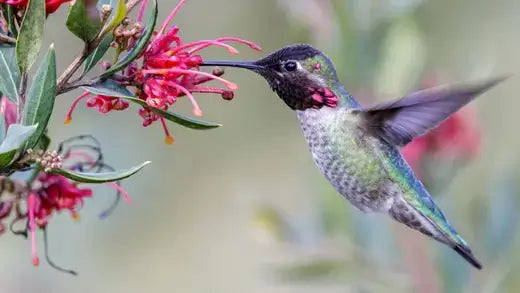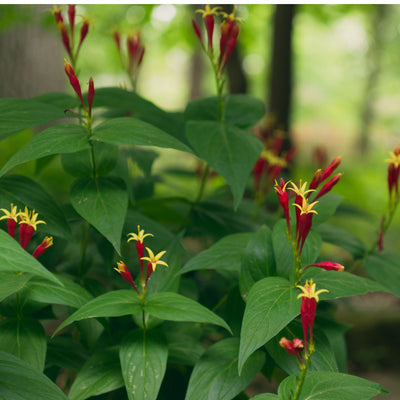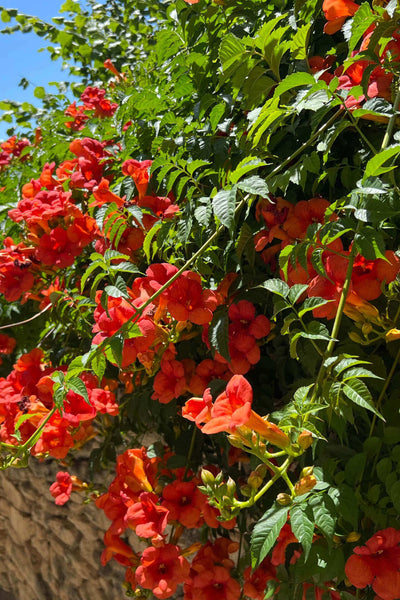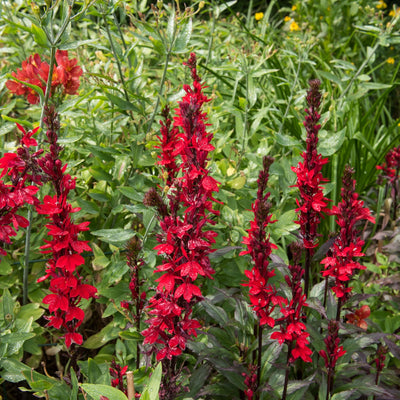Hummingbirds Favorite Nectar Filled Plants
Hummingbirds are fun birds to watch. They hover while drinking from long tubular flowers with their long tongues. Hummingbirds are very territorial so multiple feeders are required for everyone to get a drink. As an alternative, you could plant perennials that hummingbirds love and feed them nature’s nectar.
Hummingbirds prefer the nectar of red, orange, and pink flowers but will drink from others. At least nineteen species of plants in the eastern United States are pollinated primarily by the ruby-throated hummingbird, the only hummingbird east of the Mississippi. West of the Mississippi, nineteen species of hummingbirds are regularly seen in the United States.
Here are our five picks for the best hummingbird-attracting perennials wherever you live.
Butterfly Milkweed (Asclepias tuberosa)
Butterflies are not the only ones attracted to butterfly weed. Hummingbirds love them, too. Butterfly weed is native to North America. It is typically found in dry, rocky, open woods, meadows, prairies, fields, and roadsides. Butterfly weed has flowers in golden yellow, orange, and red/Burgandy and green leaves. In addition to butterflies and hummingbirds, butterfly weed attracts bees, moths, and other pollinators. Deadheading the spent blossoms will make the plant produce more blooms. Butterfly weed is heat and drought-tolerant and deer and rabbit-resistant.
|
Zone |
Height |
Width |
Bloom time |
Sunlight |
|
3-9 |
1-2 feet |
1-1.5 feet |
Spring, Summer |
Full Sun |
Indian Pink Plant (Spigelia marilandica)
Indian pink plants are native to North America and grow in forests. They have long red flowers with yellow middles and dark green leaves. Indian pink likes dappled sunlight, so it is suitable for under trees. In addition to attracting hummingbirds and pollinator insects with its flowers, the seeds of Indian pink plants attract songbirds. This plant is very fire resistant. One note of caution is that all parts of the plant are poisonous.
|
Zone |
Height |
Width |
Bloom time |
Sunlight |
|
5-9 |
1-2 feet |
1.0-1.4 feet |
Late Spring, Early Summer |
Partial Shade |
Trumpet Vine (Campsis radicans)

The trumpet vine is a vigorous woody vine that climbs up structures and other plants. It has orange tubular flowers and dark green leaves. Native to the southeastern United States, trumpet vine grows in swamps, forests, and thickets. It is naturalized in much of the northeastern United States. Trumpet vines are moderately resistant to deer, drought, and heat. Expect to prune the vine to keep it in check, or it will outgrow its space.
|
Zone |
Height |
Width |
Bloom time |
Sunlight |
|
4-10 |
30-40 feet |
1-10 feet |
June-September |
Full Sun, Partial Shade |
Virginia Bluebells (Mertensia virginica)
Virginia bluebells are attractive to hummingbirds despite being blue. The foliage is purple at first before turning bluish-green to grayish-green. The buds are pink and open to reveal blue flowers. Virginia bluebells are native to central Canada and the central and eastern United States. They like floodplain thickets and forests. In addition to hummingbirds, they attract bees and other pollinators. They are also rabbit-resistant.
|
Zone |
Height |
Width |
Bloom time |
Sunlight |
|
3-9 |
1-2 feet |
1-1.5 feet |
Spring |
Deep Shade, Partial Shade |
Red Cardinal Flower (Lobelia cardinalis)
The red cardinal flower is native to North America and likes to grow in moist woodlands, wet meadows, and along streams and ponds in the wild. The leaves are dark, shiny green, and the flowers a brilliant red. Bees, butterflies, and other pollinators are also attracted to this plant. The plant is poisonous if eaten in large quantities.
|
Zone |
Height |
Width |
Bloom time |
Sunlight |
|
3-9 |
4-5 feet |
1-2 feet |
Late Summer/Early Fall |
Partial Shade, Full Sun |
Other Ways to Support Hummingbirds
Hummingbirds need water, shelter, and food. They also need nesting material to line their nests.
Water
A bird bath or water fountain will do the trick. Place a brick in a bird bath so the hummingbird can perch and reach the water quickly. Most of the water a hummingbird needs comes from nectar, but they also like a drink from time to time.
Shelter
Hummingbirds like to nest on the tiny limbs of trees and shrubs. They prefer trees with rough bark and lichens to smooth-barked trees. Their nests are the size of a golf ball. They sometimes nest in shrubs that have nectar-bearing flowers. Their nests are usually 5-20 feet in the air with nothing but the tree limb under them.
Nesting Material
Hummingbirds collect spider webs to hold their nests together. The female lines the nest with soft blossoms such as milk thistles and milkweed, and she camouflages the nest with lichens and leaves to hide it from predators.
Hummingbirds prefer long tubular flowers in red, orange, and yellow. They will sip nectar from other flowers, though. To attract the birds to your yard, provide water, shelter, nesting material, and nectar. Natural nectar is much better for hummingbirds than artificial nectar. Plant different flowers from spring through late fall for the best results. Butterfly milkweed, Indian pink plant, trumpet vine, Virginia bluebells, and red cardinal flower are good choices to provide nectar to your hummingbirds.
Visit our online shop for a wide selection of plants and trees, or come say hi at our store location in Tennessee!
We offer fast shipping nationwide, so you can start transforming your garden today!
If you have any questions about flowers that attract hummingbirds or any other plant needs, don’t hesitate to contact us at customerservice@tennesseewholesalenursery.com, we’d love to hear from you!



